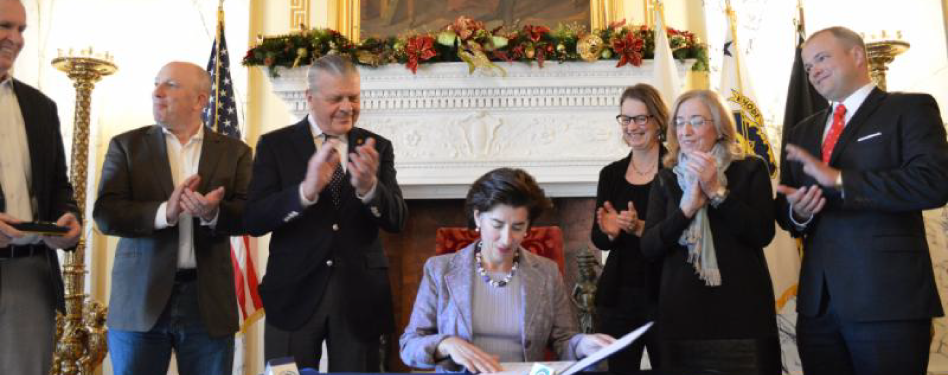
On December 15, the Honorable Gina Raimondo, Governor of Rhode Island, signed a law “showing that [Rhode Island] is serious about being green.”
The legislation updates the state’s Green Buildings Act, first adopted in 2009. The amended law now includes LEED for Neighborhood Development and SITES as applicable standards for the sustainable development of real public property, making Rhode Island the first state to incorporate SITES into statewide public policy.
“I love it that Rhode Island is first, and I hope that the rest of the nation follows our lead,” said Gov. Raimondo upon signing the legislation into law. “It is the right thing to do. It is the right thing for the environment, and it will also save money,” she said, by enabling the state to consume less water and energy while creating jobs.
In 2009, Rhode Island became the first state to adopt LEED into law for state construction projects, through its Green Buildings Act. The update to the legislation maintains the previous commitments and effectively establishes a demonstration project period for four years or four projects, whichever comes first, where new public construction in the Ocean State must apply sustainability and resilience measures to project sites beyond the buildings themselves.
“Once again, Rhode Island shows its leadership position,” said USGBC Chair of the Board of Directors and Rhode Island native Mike McNally. “[T]he certification has moved beyond the buildings, into the public space here in Rhode Island, and we expect the rest of the states to follow as they did years ago.”
The signing was the culmination of a multi-year collaborative effort between USGBC, USGBC Rhode Island, and other stakeholders, such as the Rhode Island Builders Association.
